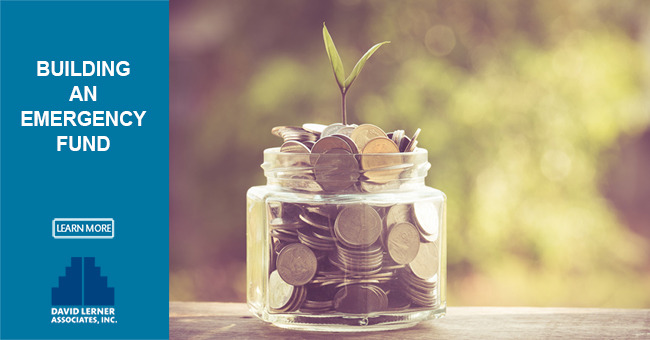
Building an Emergency Fund

An emergency fund is an account used to set aside funds needed in the event of a personal financial dilemma, such as the loss of a job, medical expenses, or other major unforeseen expenses. The purpose of the fund is to improve financial security by creating a safety net of funds that can be used to meet emergency expenses as well as reduce the need to draw from high interest debt options, such as credit cards or unsecured loans.
Creating a healthy emergency fund can at times be a lofty and intimidating goal. But in this uncertain economy, saving your money is almost an essential activity, as opposed to an optional one. This is an activity which will come in handy should anything catastrophic happen.
Emergency funds are a key component to a healthy financial life, and having that big safety net sitting in an account somewhere will give you peace of mind, knowing that should something unexpected happen, requiring the use of savings to get you through a number of months, you have it at your fingertips.
Now, that’s all quite obvious. But how do you accomplish this?
Everyone wants to save more money, but figuring out how to do it is the hardest part. Many Americans still struggle with being able to set aside a little something for the future every month. Millennials, in particular, are facing a tougher uphill climb as they face a harsher job market and overwhelming student loan bills.
Americans owe over $1.4 trillion in student loan debt, spread out among about 44 million borrowers. That’s about $620 billion more than the total U.S. credit card debt. In fact, the average Class of 2016 graduate has $37,172 in student loan debt, up 6% from last year.
And as far as savings go, the number of Americans who have no cash in the bank to fall back on is staggering. Approximately 26% of adults have no savings set aside for emergencies, while another 36% have yet to start socking away money for retirement.
One sure way to dismantle your emergency fund is to spend the money on non-emergencies. That is to say, you’ve accumulated several hundred dollars in savings, and all of a sudden get the itch for an extravagant purchase.
If you want a savings account to reward yourself with something nice, then by all means, open a separate account, and call it your “Rewards Fund,” and go buy that flat screen TV or take a vacation to Hawaii. But don’t touch the emergency account. A week-long getaway to Maui doesn’t fall into the “emergency” category.
Set your target low
First step to building your emergency fund is to set a reachable savings goal. Start with $500. That’s something that can be done in a few months or even less if you are frugal.
Put a time limit on it. “I want to save $500 by June 1st.” Ok, so now you can break that down into how much needs to be squirreled away monthly or even weekly.
Find the money in what you’re already spending
You may have asked yourself, “How do I save $50 a week, when I’m barely making ends meet as it is?”
The trick is to not have to earn extra money, but rather find the savings in the money you’re already spending. For example, take a look at your credit card payments. Is there a way to reduce your rates? Turn over your credit card, and call the number on the back. A simple request to get a rate reduction might result in a pleasantly surprising outcome.
Shopping around for better insurance policies can save you money. So can installing a programmable thermostat or planning your grocery shopping instead of just wandering around the aisles picking up random, unnecessary items.
Try reducing your number of dinners out per month. You’d be surprised at how much you spend on restaurants. Saving money on gas is easy if you have a colleague who lives close by and is willing to car pool, or use public transportation.
Ask yourself, “How often do I watch Netflix? Cable?” Find those monthly bills that you’re paying that you’re not using. Is there a better cell phone plan you could be on?
Before you know it, that $50 will be easily available to you and ready to be stored away in your emergency fund account.
In a few months, you’ll hit your first goal of say, $500. Now set another goal, maybe double the amount. And keep going until you can reach a goal of having an entire month’s worth of expenses sitting in your account. Then two months, three months, and so on.
IMPORTANT DISCLOSURES
Material contained in this article is provided for information purposes only and is not intended to be used in connection with the evaluation of any investments offered by David Lerner Associates, Inc. This material does not constitute an offer or recommendation to buy or sell securities and should not be considered in connection with the purchase or sale of securities.
To the extent that this material concerns tax matters, it is not intended or written to be used, and cannot be used, by a taxpayer for the purpose of avoiding penalties that may be imposed by law.
Each taxpayer should seek independent advice from a tax professional based on his or her individual circumstances.
These materials are provided for general information and educational purposes based upon publicly available information from sources believed to be reliable– we cannot assure the accuracy or completeness of these materials. The information in these materials may change at any time and without notice.
David Lerner Associates does not provide tax or legal advice. The information presented here is not specific to any individual's personal circumstances. Member FINRA & SIPC

